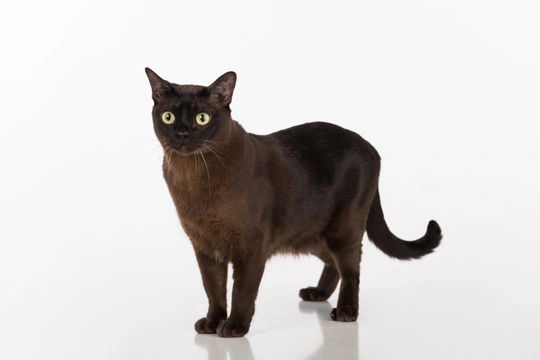
Burmese Hypokalemia in Cats
Burmese hypokalemia is also called Familial Episodic Hypokalaemic Polymyopathy and the disorder appears to affect certain breeds more than others. Cats with the condition experience low serum potassium levels together with high CPK which is a sure sign of them suffering from muscle damage. Luckily, there is a test available for Burmese hypokalaemia and all cats predisposed to suffering from the condition should be screened before being used for breeding purposes.
Breeds Most at Risk
As previously mentioned, there are certain breeds that are more predisposed to developing the condition than others and this includes the following breeds:
- Asian
- Australian Mist
- Bombay
- Burmese
- Burmilla
- Cornish Rex
- Devon Rex
- Singapura
- Sphynx
- Tiffanie
- Tonkinese
Symptoms to Watch Out For
When cats develop the condition they typically show the following signs of there being something wrong with them:
- Weakness in their muscles and more especially in their neck muscles
- Problems standing up and walking
Diagnosing the Problem
A vet would need to have a cat's full medical history and ideally their ancestry too. They would also need to be told how the onset of the symptoms first manifested themselves and if any other incident might be the cause of a cat developing the symptoms. A vet would thoroughly examine a cat suspected of suffering from the disorder and would typically recommend carrying out the following tests:
- A complete blood count
- A biochemistry profile
- A urinalysis
- Abdominal X-rays
- An ultrasound
- CT scan
- MRI scan
Testing for Burmese Hypokalaemia
Fortunately, as previously mentioned, there is a test for Burmese hypokalemia which can either be done by a simple mouth swab or a blood test which would establish whether a cat has inherited the genetic autosomal recessive gene. A cat can be a carrier and never show any signs of having the disorder, but they would pass the defect on to their offspring. However, to maintain a health gene pool in certain breeds affected by the disorder, it is possible to mate a carrier"" with a healthy “normal” cat that does not carry the defective gene. With this said, two ""carriers"" should never be mated because the risk of them passing the defective gene on to their offspring is greatly increased.
Interpreting Test Results
Once a cat has been tested for Burmese hypokalemia, the test results will come back as follows:
- Normal Burmese Hypokalemia genetic test result - this establishes that a cat does not have the defective gene responsible for the disorder
- Carrier Burmese Hypokalemia genetic test result - this establishes that a cat possesses one copy of the defective gene and although they would never show any signs of suffering from the condition, they could pass it on to their offspring if mated with another cat that's a carrier
- Affected Burmese Hypokalemia genetic test result - this establishes that a cat does indeed have two copies of the defective gene and as such they will develop the disorder
Living with a Cat with Burmese Hypokalemia
Cats with the condition can live normal lives providing they are given potassium supplements in their diet. By adding a supplement to a cat's food, it greatly reduces the effects of the disorder. In some cases, symptoms of Burmese hypokalemia disappear when a cat reaches a certain age which is typically when they are anything from 1 to 2 years old.
""



